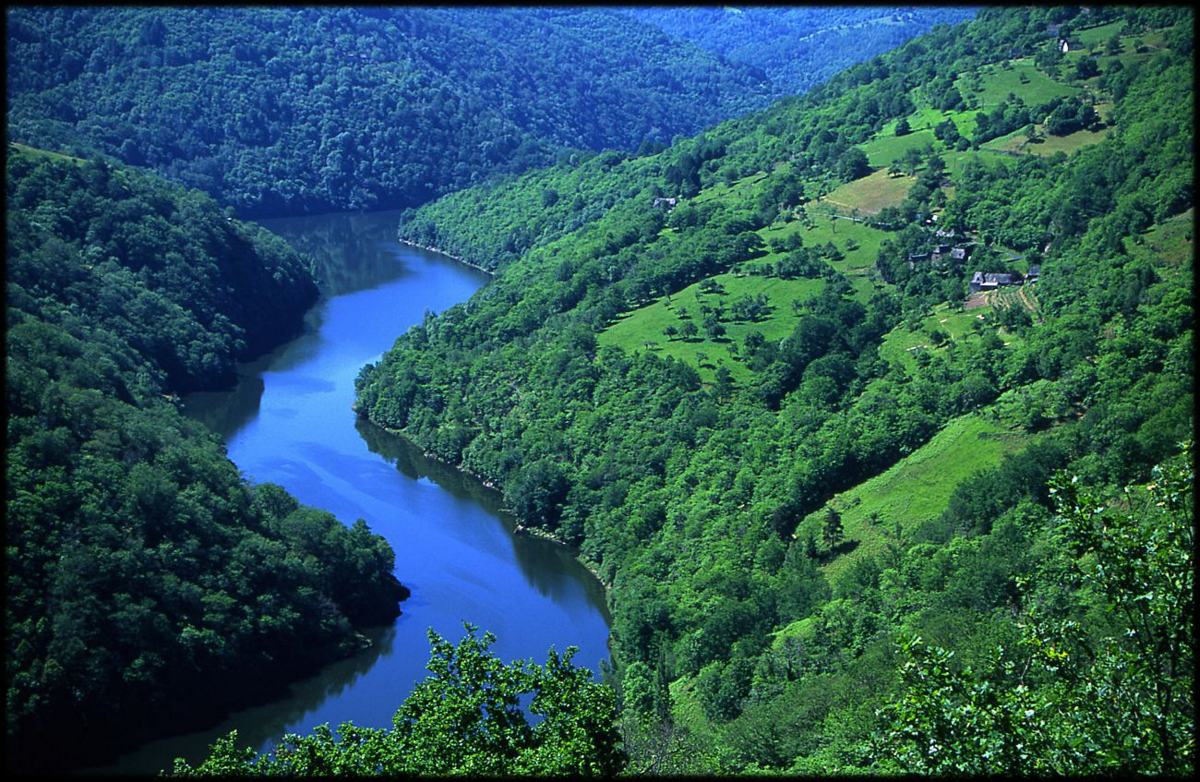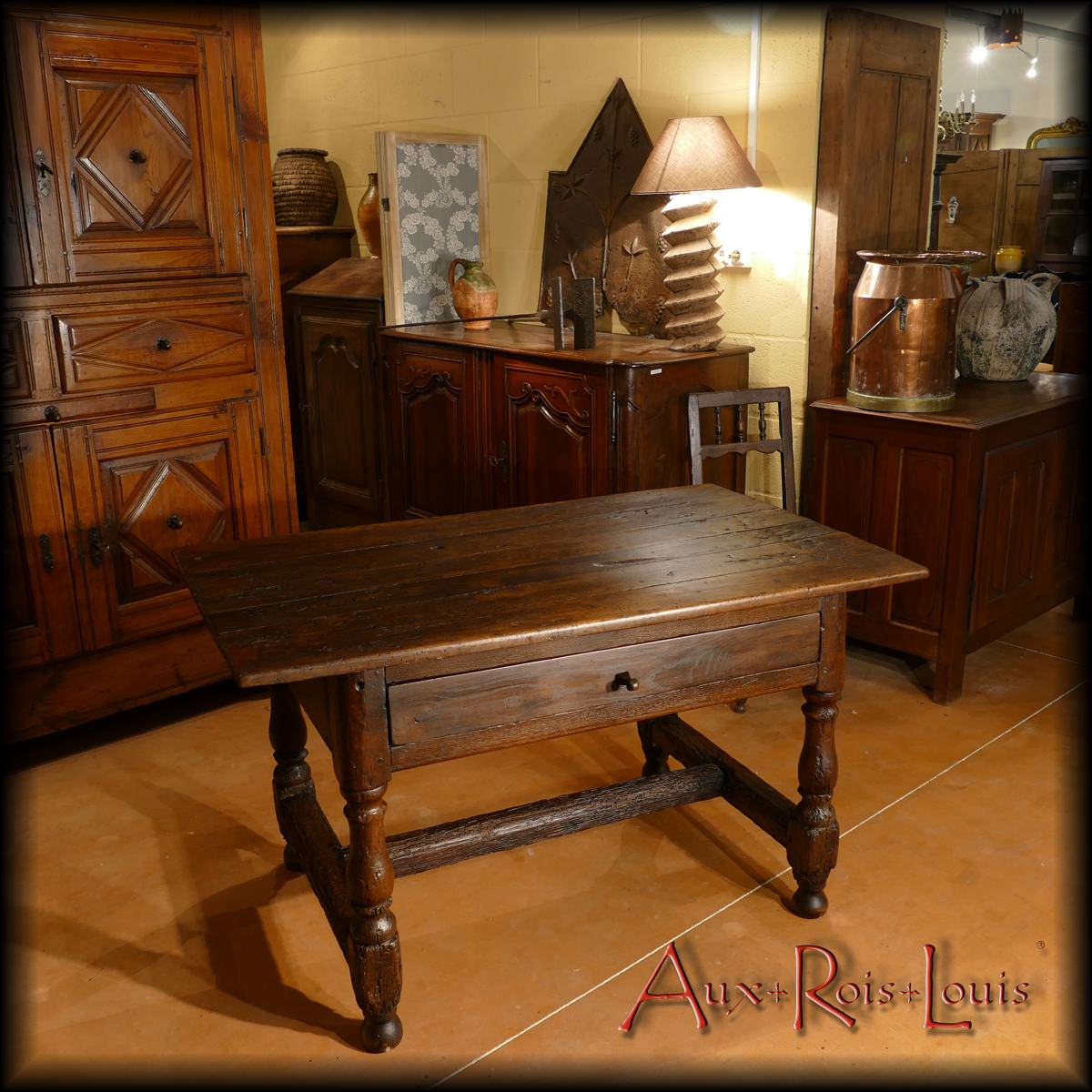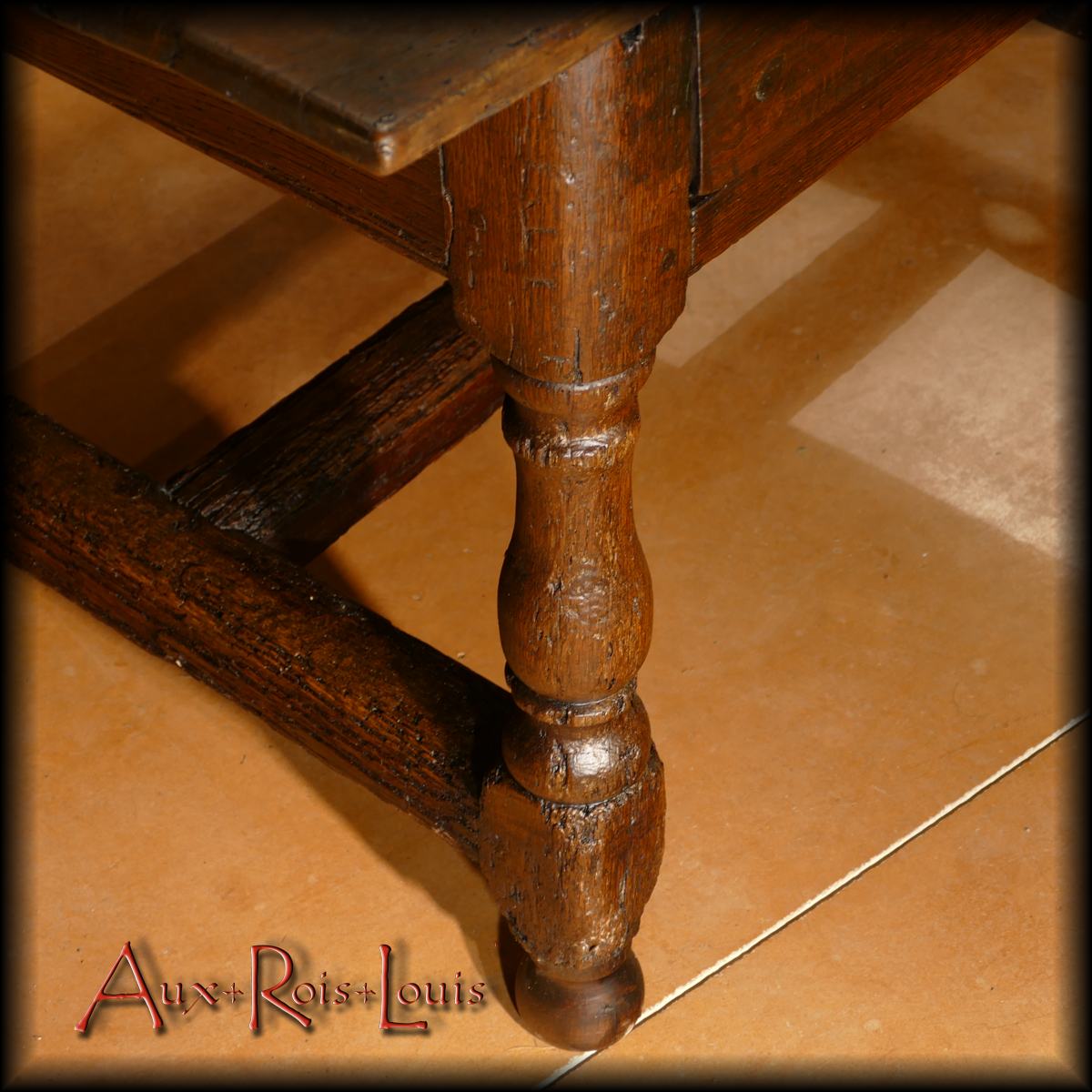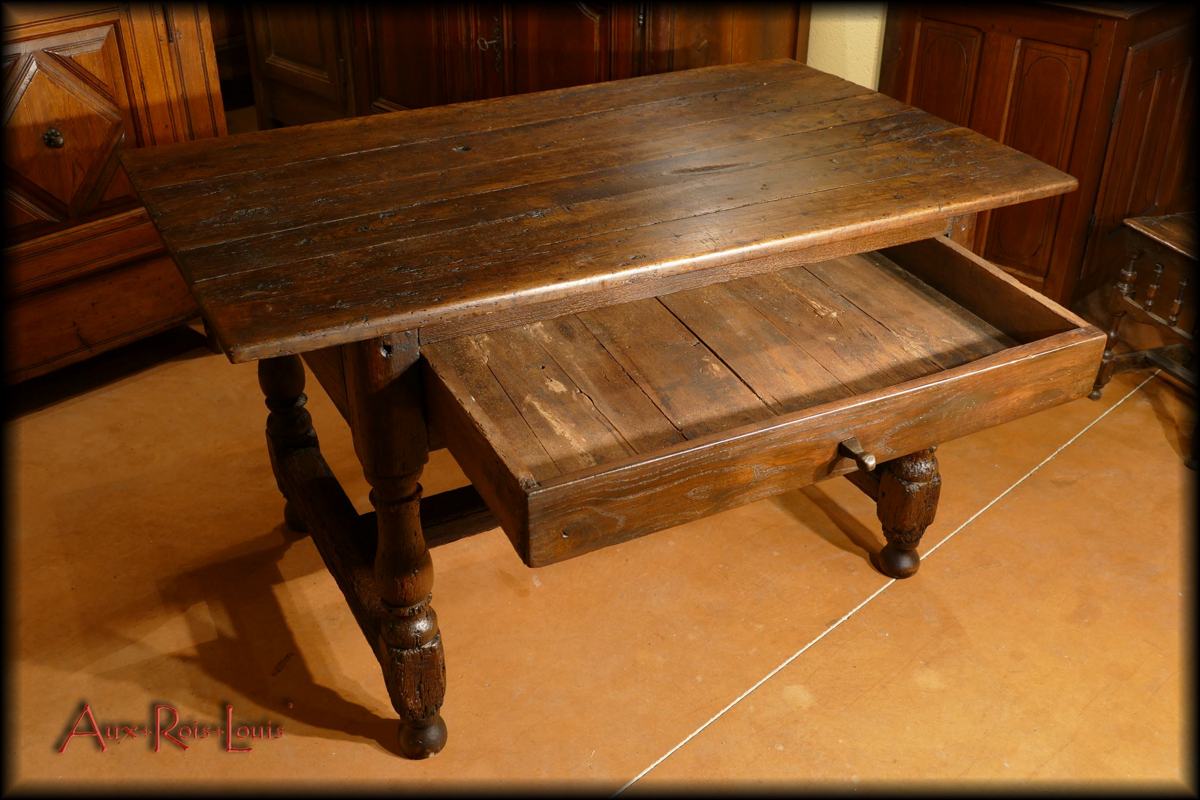Desk table in oak and chestnut – Louis XIII – 17th century – Quercy
Given the rarity of this type of table that served as a desk, one can imagine that this piece of furniture from Quercy experienced the heyday of river transport on the Lot during the 17th century.
This desk table was probably the prerogative of a high dignitary of the customs corps, in charge of a flourishing trading post. From this outpost, with cash drawer and stamps close at hand, his mission was to collect navigation fees.
It should be remembered that the river Olt (Occitan name of the Lot) constituted since Roman times the only longitudinal route descending from the Massif Central to Aquitaine, crossing Rouergue, Quercy and Guyenne.
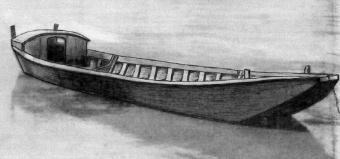
Following the ordinance of King Louis XIV on the fact of Water and Forest dated August 13, 1669, ordinance reaffirming the belonging of the rivers to the royal domain, the Olt, nicknamed « la ligne » (“the line”) benefited from titanic development works to ensure its navigability.
Our tax collector, sitting at his office table in the 17th century, could thus control intense traffic during the high navigable season, namely from September to June.
He accounted for and taxed the goods which circulated mainly on the way down to Bordeaux. Loads of timber and firewood, pieces of wood called staves to make barrels, tons of sand, stones and coal as well as food from agricultural land filled in turn, in an incessant traffic, large convoys of barges.
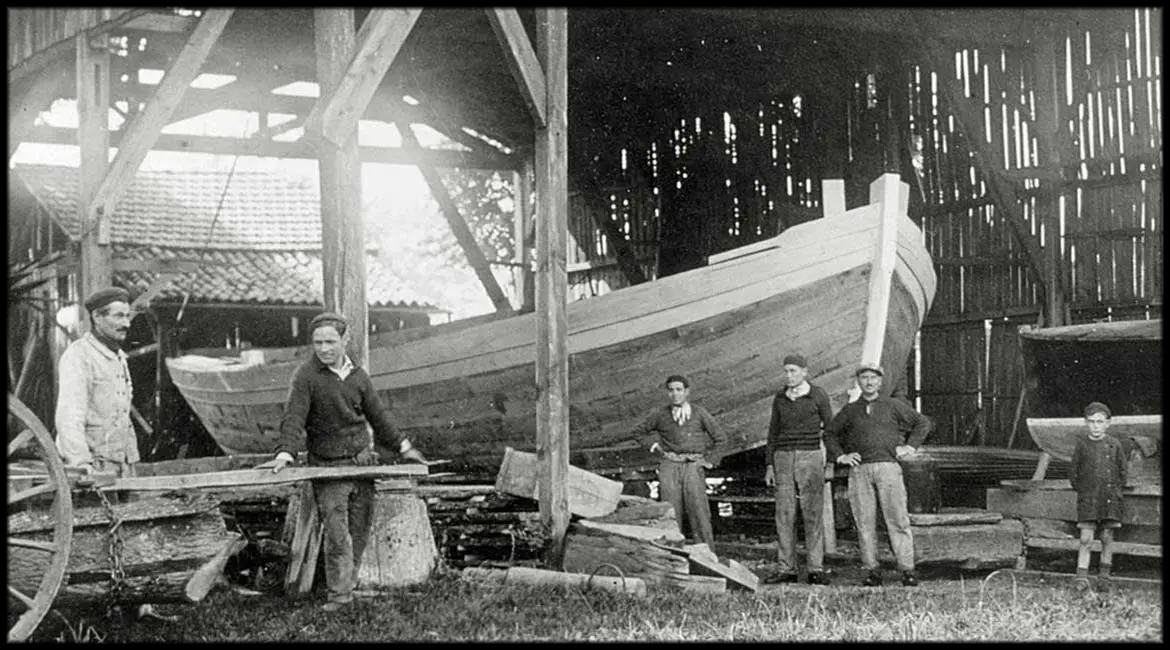
These boats, once they arrived safely in Bordeaux, were dismantled on site to sell the timber. A more profitable operation than having to go up them against the current, drawn by draft animals exhausting themselves along the towpaths.
This golden age of river navigation has experienced a sharp decline at the end of the 19th century, due to the advent of the railway and road transport.
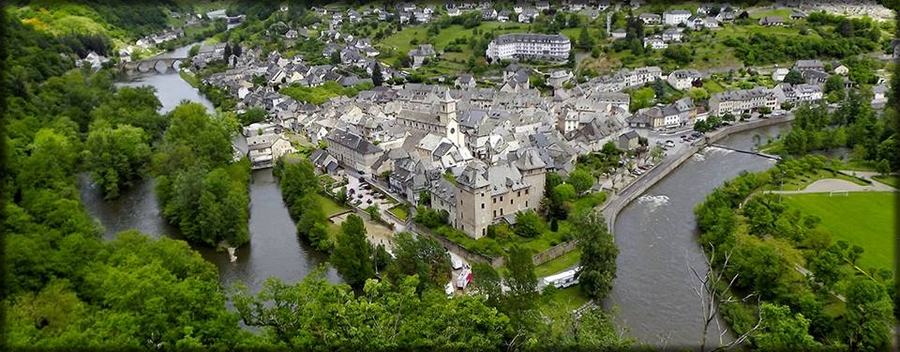
At the beginning of the XXᵉ century still lived in Entraygues-sur-Truyère in the Aveyron (at the confluence of the Lot and the Tuyère), the last person in charge of navigation on the Lot, a certain Mr. Turlan, known as “The Admiral”, who died in 1912.
To describe this office table more precisely, we observe its robust construction which contrasts with the elegance of its thin top.
Also note:
-
the H spacer of the base naturally worn because of origin (about 400 years old)
-
the baluster-type turn feet typical of the Louis XIII style
Due to its use as a desk, this table has a very roomy drawer that occupies the entire available width.
Dimensions
Width: 130cm, height: 75cm, depth: 80cm.
Drawer: Width: 79cm, Height: 8cm, Depth: 53cm.
Reference: [ME074]

![Desk table in oak and chestnut – Louis XIII – 17th century – Quercy – [ME074] This desk table was probably the prerogative of a high dignitary of the Customs corps, in charge of a flourishing trading post located on the banks of the Olt, the former name of the Lot.](https://www.aux-rois-louis.com/wp-content/uploads/2022/06/ME074_116-1200x600.jpg)
![Desk table in oak and chestnut – Louis XIII – 17th century – Quercy – [ME074] Rare desk table with a large drawer designed under Louis XIV](https://www.aux-rois-louis.com/wp-content/uploads/2022/06/ME074_112.jpg)
